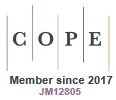About the Journal
Reproduction, Fertility and Development is an international journal for the publication of original and significant contributions to the field of reproductive biology in vertebrate animals, including humans, livestock and wildlife (as well as pest animals).
Reproduction, Fertility and Development publishes high quality original contributions, reviews, viewpoints, and technical reports. Subject areas include, but are not limited to:
- behaviour
- biochemistry
- cellular and molecular biology
- developmental biology
- genetics and epigenetics
- immunology and endocrinology
- human reproduction
- physiology
- plant secondary compounds
- toxicology and endocrine disruptors
Wildlife: rather than simply extending familiar biology to a new species, work must show how the species studied adds new perspectives to our general understanding of reproductive biology.
Reproductive technology: our readers are interested in novel developments, but rarely in purely clinical application of artificial reproductive technology. Again, it is important that authors show how their studies add new perspectives to our general understanding of reproductive biology. On the other hand, we do publish brief Technical Reports in which the focus is on advances in methodology or the workflow.
Environmental influences on reproduction: we are interested in how the reproductive system is affected by endocrine disrupting chemicals (EDCs) and by biologically active mixtures such as plant extracts. Importantly, we need to see indications of mechanisms of action because our aim is to publish new perspectives in our general understanding of reproductive biology.
Molecular genetics: the journal rarely accepts manuscripts based on a correlation between a polymorphism in a specific 'candidate' gene and an aspect of reproductive function. The correlation alone is not sufficient to advance our understanding of the processes because it does not strongly link cause and effect; at best, it is a hypothesis and needs to be supported by functional studies. Results from most candidate gene studies cannot be replicated, often because there is insufficient experimental power or appropriate statistical analysis, leading to false-positive results. Moreover, single genes very rarely reflect the real control systems, most of which involve many genes, as advances in bioinformatics and genome-wide association studies (GWAS) have clearly demonstrated. For a deeper analysis of this perspective, go to: Montgomery (2020). Commentary: lessons from molecular genetic studies on reporting false-positive results. Reproduction, Fertility and Development 32, 1298-1300. Doi: 10.1071/RD20281
All papers are peer reviewed.
Publishing Model: Hybrid. Open Access options available.
Reproduction, Fertility and Development is a valuable resource for research scientists working in industry or academia on reproductive and developmental biology, clinicians and veterinarians interested in the basic science underlying their disciplines, and students.
Reproduction, Fertility and Development is pleased to present the SRB Publication of the Year Award. This award is presented annually for the best original research publication by an SRB author in the journal.
Reproduction, Fertility and Development is the official journal of the International Embryo Technology Society and the Society for Reproductive Biology.
Follow the journal on LinkedIn and Bluesky (@RepFertDev.bsky.social), or search the hashtag #RepFertDev on social media.
ISSN: 1031-3613
eISSN: 1448-5990
Frequency: 18
issues
per year
Current Issue:
Volume 37 (14)
Impact Factor: 2.1
Indexed/Abstracted in:
- ABOA/Streamline
- Australasian Medical Index
- Biobase
- Biological Abstracts
- BIOSIS
- CAB Abstracts
- Chemical Abstracts
- Current Contents/Agriculture, Biology & Environmental Sciences
- Current Contents/Life Sciences
- EBSCO/EBSCO Discovery
- Excerpta Medica/Embase
- Index Medicus
- ProQuest (Ex Libris)
- PubMed/MEDLINE
- Reference Update
- Science Citation Index
- Scopus
- Zoological Record
CSIRO Publishing publishes and distributes scientific, technical and health science books, magazines and journals from Australia to a worldwide audience and conducts these activities autonomously from the research of the Commonwealth Scientific and Industrial Research Organisation (CSIRO). The views expressed in this publication are those of the author(s) and do not necessarily represent those of, and should not be attributed to, the publisher or CSIRO.



